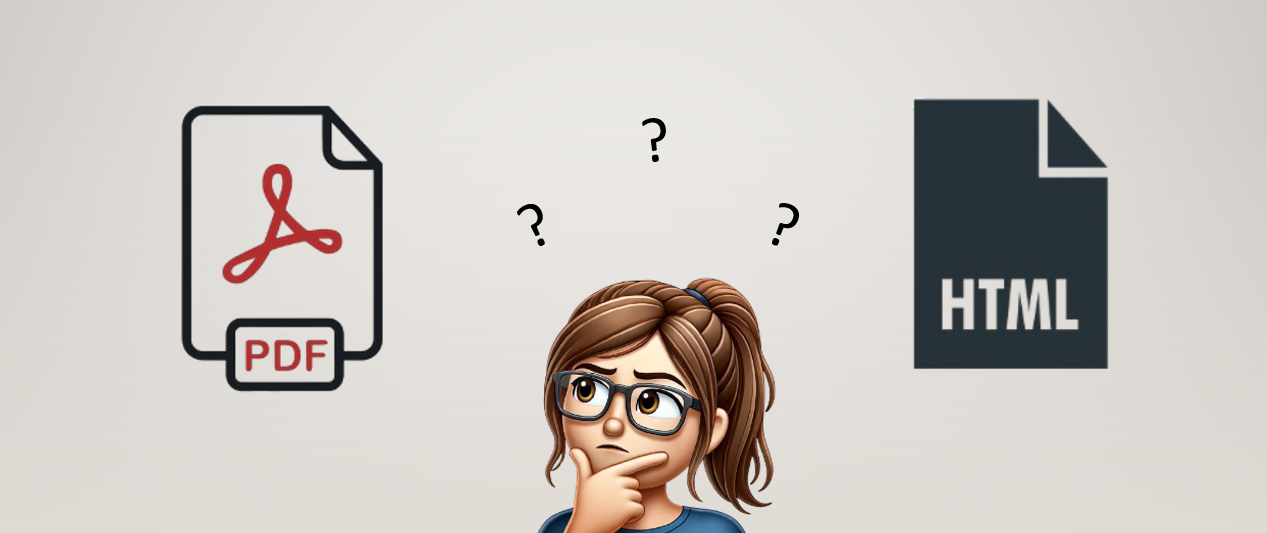Do you publish your integrated reports as a PDF to download? If you’re not printing your material, you might be missing a chance to interact with stakeholders more effectively.
PDFs have long been used and offer countless benefits to publishing and printing material. But corporate communications are evolving. As more companies switch to paperless communication, it turns out that PDFs are no longer the best option.
How do you know your reports are being read? Do you track PDF downloads? Understanding these analytics is key to understanding your stakeholders and what they value most.
Companies like Microsoft, Philips, BASF, and Bayer publish comprehensive online reports that use hyperlinks to enhance content connectivity and user navigation.
Using HTML can help you not only offer easier access to readers but also understand your audience better through analytics.
HTML vs PDF
According to the Corporate Value Reporting Lab, the number of Japanese corporations publishing integrated reports has been on the rise. More than 1,000 Japanese companies published integrated reports in 2023, up from just over 200 in 2015, with the number of issuing companies expected to rise. (For more detailed information, see the Full Report.)
While there isn’t any readily available data on the number of companies that publish using PDF vs HTML, the trend toward digital reporting is evident.
Dr. Eloy Barrantes, Chief Executive Officer of Nexxar, commented in a 2018 news article on the IFRS Foundation Integrated Reporting website, “Although integrated online reports have become well-established in many companies, they are often neglected when it comes to conception and design. Good HTML reports consider media-specific requirements of the web as a publication channel.”
He continued to add, “Today’s best-practice examples of online reports are often from companies that have been publishing HTML reports for many years and attach importance to it in both their publication and communication strategies.”
For IR professionals, publishing reports in HTML can enhance readability, accessibility, and engagement, ensuring overseas stakeholders easily grasp key points. It also improves search engine visibility, helping more investors find your reports online. You might be asking yourself, “How exactly do PDFs and HTML differ?” Let’s take a look at the general differences in this chart.

Figure Source: (Content Marketing Institute)
Notice that HTML offers everything except the exact control for printing and the option to download for offline use. The advantages of using a PDF are centered around printing published material.
Now, let’s take a more in-depth look at some of the benefits of HTML.
- Improved Accessibility
HTML is far more accessible for users with disabilities. Assistive technologies like screen readers can easily interpret HTML, making your content available to everyone.
- Mobile-Friendly Experience
Have you ever pinched and zoomed endlessly to read a PDF on your phone? HTML solves this. Its responsive design adjusts to any screen size, ensuring a seamless reading experience.
- SEO Benefits
HTML content gets indexed by search engines, improving discoverability. PDFs, on the other hand, are less SEO-friendly and rarely optimized for search.
- Interactive Features
HTML supports hyperlinks, videos, animations, and interactive data visualizations. This keeps readers engaged and makes your content more dynamic.
- Faster Loading and Performance
No one likes waiting for a massive PDF to load. HTML is lighter and faster, especially for larger documents.
- Real-Time Updates
Made a mistake? Need to add new information? With HTML, updates are instant. There’s no need for users to re-download anything.
- Analytics and Tracking
Want to know which sections your readers find most interesting? HTML lets you track user behavior, giving you insights that PDFs can’t provide.
Switching to HTML doesn’t just improve readability—it also saves time. You can update content instantly without needing to re-download files. This means fewer errors, faster revisions, and less stress when working under tight deadlines.
Why Stick with PDFs?
If your goal is digital-only distribution, there’s no reason to cling to outdated PDFs. Save them for printable materials—but choose HTML for a more user-friendly, modern approach.
Not ready for a full transition? Start small—convert your key figures into HTML and compare reader engagement metrics. Many companies even offer a hybrid of both HTML and PDF. Check out the 2023 Bayer Annual Report for an idea of how this would look.
In Short
The digital landscape is evolving fast. Don’t let outdated formats slow you down. Using HTML aligns with global best practices, showing overseas investors that your company values innovation and accessibility. Adopting HTML-based integrated reporting allows organizations to not only future-proof communication strategies but also stand out as leaders in transparency and innovation. If your company is new to this concept, understand that embracing HTML reporting is not just a technological upgrade—it’s an opportunity to tell your story in a way that resonates with modern, digitally-savvy stakeholders.
For an idea of what HTML reports (and hybrid examples) look like, check out any of the following websites.
https://report.basf.com/2023/en
https://www.clariant.com/en/Company/Integrated-Report/Integrated-Report-2023
https://www.results.philips.com/publications/ar23
https://www.microsoft.com/investor/reports/ar23/index.html
https://www.bayer.com/en/investors/integrated-annual-reports
Jessica Azumaya
最新記事 by Jessica Azumaya (全て見る)
- October 2025 Update on Generative AI Translation Quality - 8月 7, 2025
- Mastering Sentence and Paragraph Length - 8月 7, 2025
- Do You Create Reports for Both Types of Readers in the West? - 6月 17, 2025
- June 2025 Quiz Answers - 6月 11, 2025
- Meet 10 ESG Players You Need to Know - 5月 29, 2025

